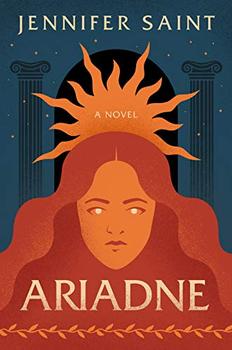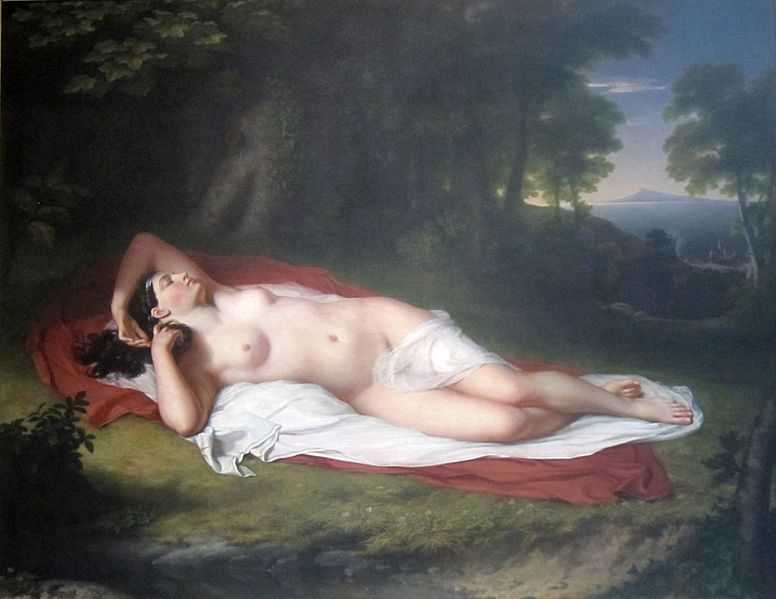Summary | Excerpt | Reading Guide | Discuss | Reviews | Beyond the Book | Read-Alikes | Genres & Themes | Author Bio

This article relates to Ariadne
 In her novel Ariadne, Jennifer Saint retells events from the life of the mythological title figure. In Greek mythology, Ariadne is known for helping the hero Theseus slay the Minotaur — a beast who was the offspring of Ariadne's mother and a bull — and find his way out of the Labyrinth, the maze beneath her father's palace. In some versions of this story, she is said to have later caught the attention of Dionysus, the god of wine, who fell in love with her and married her.
In her novel Ariadne, Jennifer Saint retells events from the life of the mythological title figure. In Greek mythology, Ariadne is known for helping the hero Theseus slay the Minotaur — a beast who was the offspring of Ariadne's mother and a bull — and find his way out of the Labyrinth, the maze beneath her father's palace. In some versions of this story, she is said to have later caught the attention of Dionysus, the god of wine, who fell in love with her and married her.
Ariadne was the daughter of Pasiphae — herself daughter of the sun god Helios — and Minos, king of Crete. After the king's son, Androgeus, was killed during some games that took place in Athens, Minos took revenge by conquering the city. He then created a requirement that every year seven young men and seven young women be sent from Athens to Crete to be sacrificed to the Minotaur in the Labyrinth, an elaborate structure designed by the architect Daedalus to contain the beast. One year, Theseus, son of the Athenian king Aegeus, volunteered to be among the 14 young people sent to Athens, with the intention of killing the Minotaur.
This is the point at which Ariadne enters the story: Having fallen in love with Theseus, she decided to assist him in his mission. She equipped him with a sword for slaying the Minotaur as well as a ball of thread to tether him to the entrance of the Labyrinth so he could find his way back out. With her help, he was successful in killing the Minotaur and escaping the Labyrinth.
Ariadne accompanied Theseus on his return to Athens. According to some versions of the story, he abandoned her on the island of Naxos, where she was rescued by Dionysus. In others, she was left by Theseus and hanged herself. Several other variations of events exist as well. In versions of the myth where Ariadne and Dionysus married, they had many children, including Oenopion, whose name means "wine drinker," and Staphylus, whose name means "grape cluster."
Many artists — from ancient Greece and beyond — have portrayed Ariadne alongside Dionysus, or on Naxos as the god discovered her, and her story has served as inspiration for literature, such as poems by Elizabeth Barrett Browning (Browning's poems refer to Bacchus, another name for Dionysus).
References to Ariadne can also be found in modern pop culture. She has appeared as a character in television shows based on Greek myths, including Atlantis and Olympus. The last episode of the first season of the series Russian Doll is titled "Ariadne"; the episode features two characters' attempts to help one another out of a time loop, which can be seen to parallel Ariadne's attempts to help Theseus through the Labyrinth.
In addition to appearing in a retelling of her own story in Ariadne, the character plays a minor role in Madeline Miller's Circe.
Ariadne Asleep on the Island of Naxos (1809-1814) by John Vanderlyn, from the Pennsylvania Academy of the Fine Arts
Filed under Places, Cultures & Identities
![]() This "beyond the book article" relates to Ariadne. It originally ran in May 2021 and has been updated for the
April 2022 paperback edition.
Go to magazine.
This "beyond the book article" relates to Ariadne. It originally ran in May 2021 and has been updated for the
April 2022 paperback edition.
Go to magazine.
Your guide toexceptional books
BookBrowse seeks out and recommends the best in contemporary fiction and nonfiction—books that not only engage and entertain but also deepen our understanding of ourselves and the world around us.